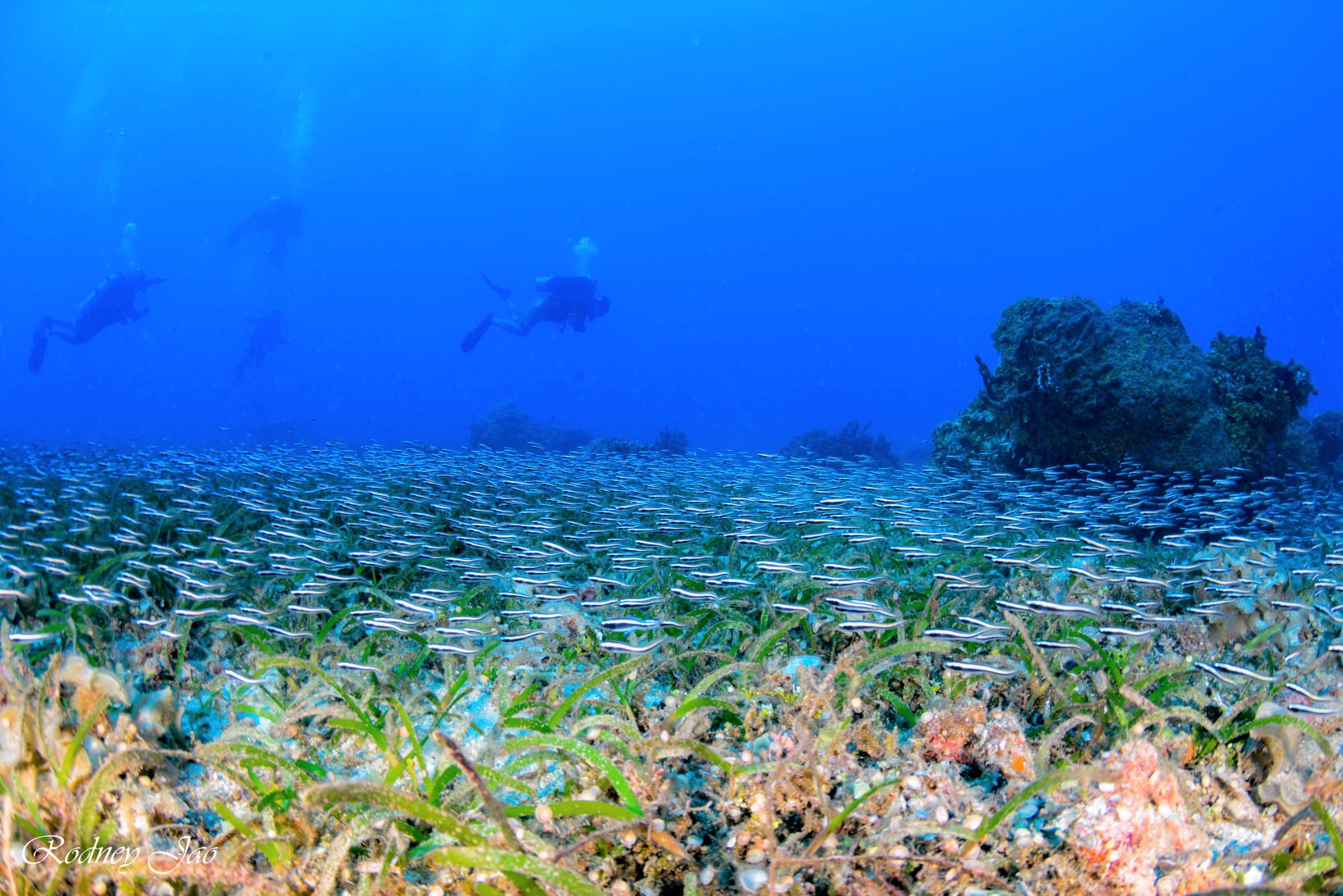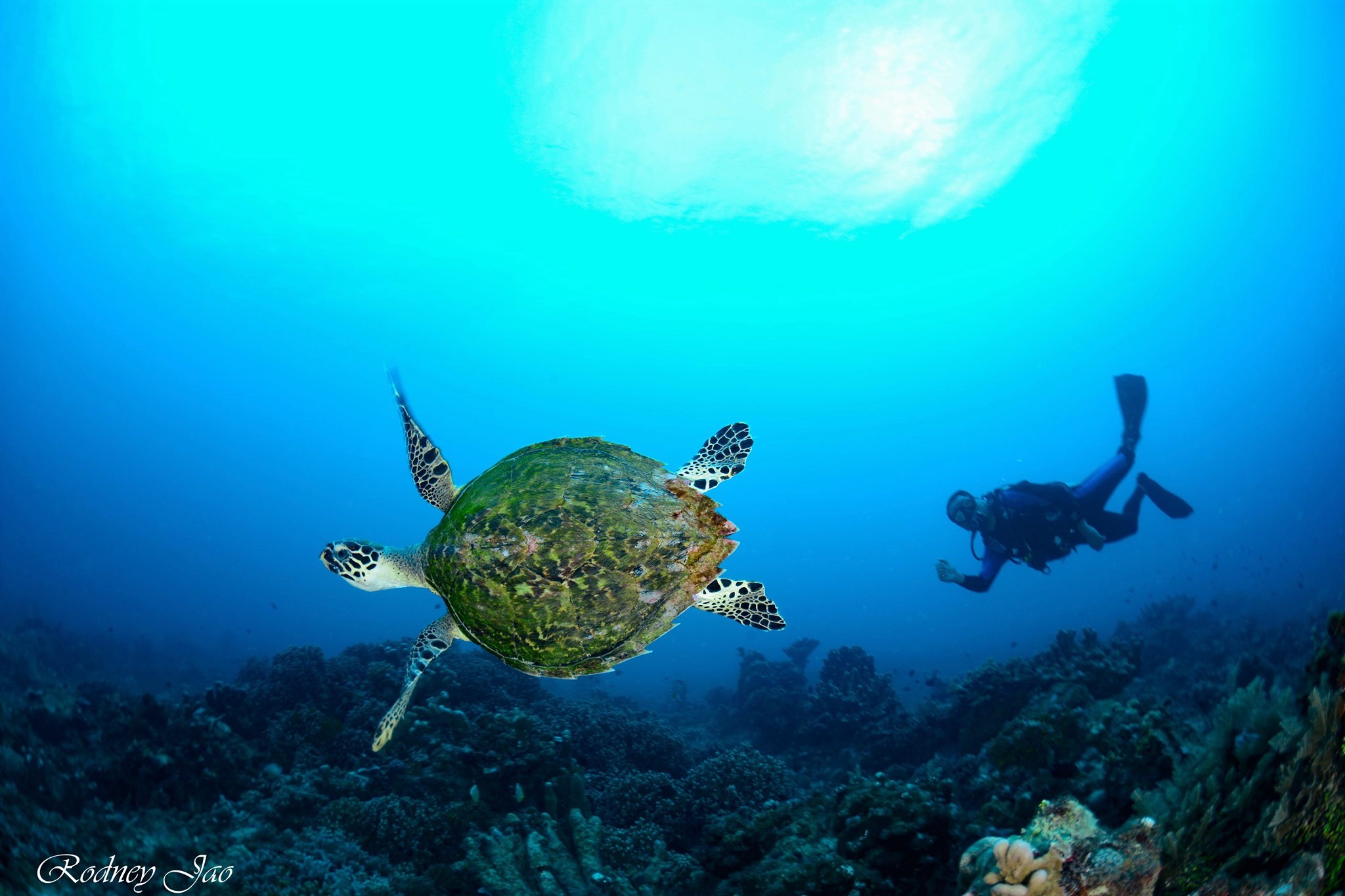Text by Henrylito D. Tacio
Photos courtesy of Rodney Jao
“Seventy-five percent of the Earth is water. Divers live on a much bigger planet.” – Unknown
When you are in the Philippines, it’s more fun when you explore places that have never been visited. Take the case of oceans.
“There’s a lot to be said about this otherworldly experience that seems to take hold of us and make us completely obsessed with it and the world in which we get to experience,” wrote wild-hearted.com’s Ashley Hubbard. “The ocean is so inspiring, there have been many scuba diving movies made and scuba diving books written.”
To those who have tried scuba diving, it’s totally a different world. “Diving is an investment of time and money but the rewards can be life-changing, literally,” said Andy Cummings.
Here’s what Natalie Lavery said of scuba diving: “You’re 30 feet underwater, the ocean is brisk, the slight current is stirring the sand, the colorful fish are swarming, the bright red lobsters are playfully harassing the neon eels – everything seems surreal, especially the fact that you’re breathing underwater.”
James Cameron observed, “Every time you dive, you hope you’ll see something new – some new species. Sometimes, the ocean gives you a gift, sometimes it doesn’t.”
While diving is considered an “adventure sport,” it takes people into a calm and quiet environment – there are no cellphones, no e-mails, and no way for the terrestrial world to contact you. The only noises you hear are the hiss of exhalations and the munching of fishes.
With 7,107 islands, the Philippines has one of the longest coastlines in the world – estimated at 36,289 kilometers. Its diverse coastal zone consists of a variety of tropical ecosystems, including sandy beaches, rocky headlands, sand dunes, coral reefs, mangroves, seagrass beds, wetlands, estuaries, and lagoons.
As such, diving in the Philippines is spectacular. After all, this country lies in the so-called “ring of fire,” making it prone to powerful earthquakes, volcanic eruptions, and tsunamis. The result: great landscapes and underwater areas.
Davao Gulf, situated in the southeastern portion of Mindanao, is not in the recommended list of diving sites in the country. But those who have been to the place can attest that it is one of the most beautiful dive areas in the country.
“Davao Gulf has a beautiful and varied underwater terrain,” says Harry Morris, a marine biologist who heads the Trinity Project based in Banana Beach in Tagum City, Davao del Norte.
Morris describes the gulf, which has an area of 5,200 square kilometers or about 520,000 hectares, as having “dive sites for all levels, with healthy corals, varied fishes, and amazing topography.”
It’s no wonder scuba diving is becoming a popular leisure tourism activity in the region.
“Like other tourism activities, diving is a service-intensive sector,” Tanya Rabat-Tan, regional director of the Department of Tourism 11, was quoted as saying by EDGE Davao. “From equipment and boat rentals, services of professional divers and guides, assistance and support of host dive communities, food and transportation suppliers, and more – these are just some of the people who will benefit from revenues from dive and other dive-related activities.”
The Island Garden City of Samal may be on the top list of dive sites in the region, but equally enthralling are the diving sites of Mati City in Davao Oriental. Once the region’s “best-kept secret,” it is now touted as the next big tourist destination with the recent pronouncement of its three bays as among the world’s most beautiful.
The three bays are Pujada, Mayo, and Balite. “Pujada Bay is almost a virgin paradise,” said Bruno Bodard, founder and manager of the Most Beautiful Bays in the World Organization. “It is much more beautiful than we expected. The Philippines is a very nice country. You have the jewel in Pujada.”
Guy Rousset, the club treasurer who accompanied Bodard for the validation, told Philippine Daily Inquirer of Pujada Bay: “This place beguiles and inspires, sedates and stirs, where the distance between heaven and earth collapses and you will be able to catch glimpses of the divine or the infinite as you are united with nature.”
Rousset was also impressed by the two other bays. “I will call them Mati Bays,” he said. “Your bays are very nice. You must be proud of your bays.”


These impressive bays are indeed the best dive sites. “The City of Mati has very good diving sites that are rich in coral reefs,” said Francisco Juan Diaz Martinez, a foreign diver from Buceo An Cabo de Gata company.
He was one of the three foreign divers who visited Mati City recently as part of the initiative of the Tourism Council to sustain the protection of Pujada Bay and to create the foundation of a diving industry in the city.
Unfortunately, some parts are not in good condition. “They need to be protected because corals have been affected by overfishing,” Martinez said. “Within five years, you can bring back the beauty of the ecosystem in Pujada Bay.”
Among the dive sites the city government is promoting are those in Kadanlaan and Maribojoc in barangay Dahican, Tampagas in barangay Tamisan, and Waniban and Pujada Islands.
The tourism office is very much enthusiastic that Mati City will be listed as among the diving sites of the Philippines. In fact, it has recently joined the recent Davao Dive Expo 2022 in Davao City.
Tourism officer Dashiel Indelible, Jr., said the dive tourism in Mati is still in its infancy, but he believed their participation in the expo will definitely make a mark in this kind of tourism program.
“Aside from the sites being divers-friendly, the area is within one of the most beautiful bays in the world,” he says, but adding that in terms of logistics – like having dive shops and dive boats – they are still lacking.
“People who want to pursue diving in Mati City should go to the tourism office first for arrangement so that we can arrange the logistics,” Indelible says, referring to boats, tanks, compressors, and dive guides. “For the master divers, we will recommend to our partner dive shops in Davao City.”
If you have not tried scuba diving, now is the time. “In a few short years, you might have to become a scuba diver and go hundreds of feet underwater. It will be the last refuge of pure aura and power on our planet, the oceans’ depths,” wrote Frederick Lenz.

